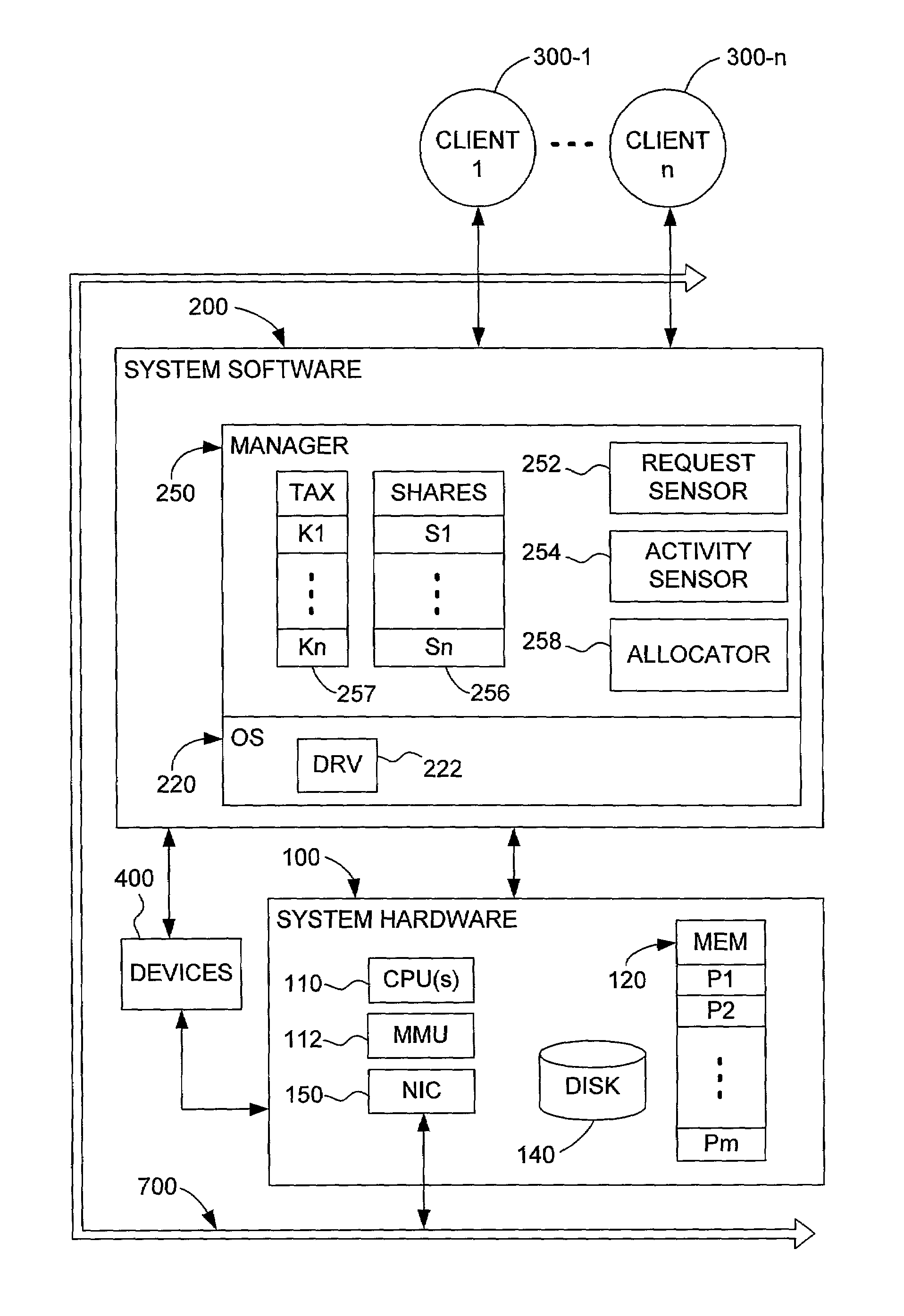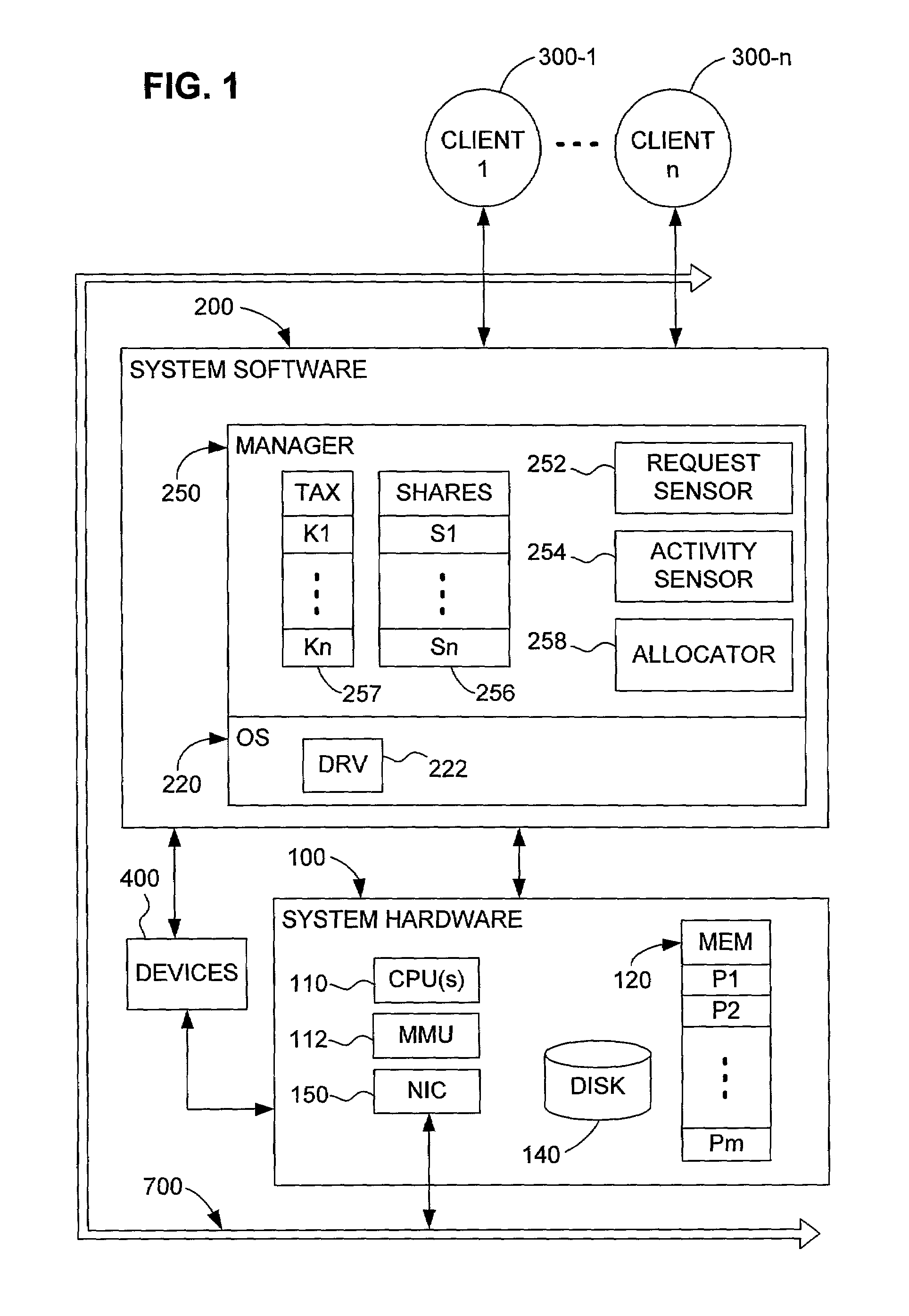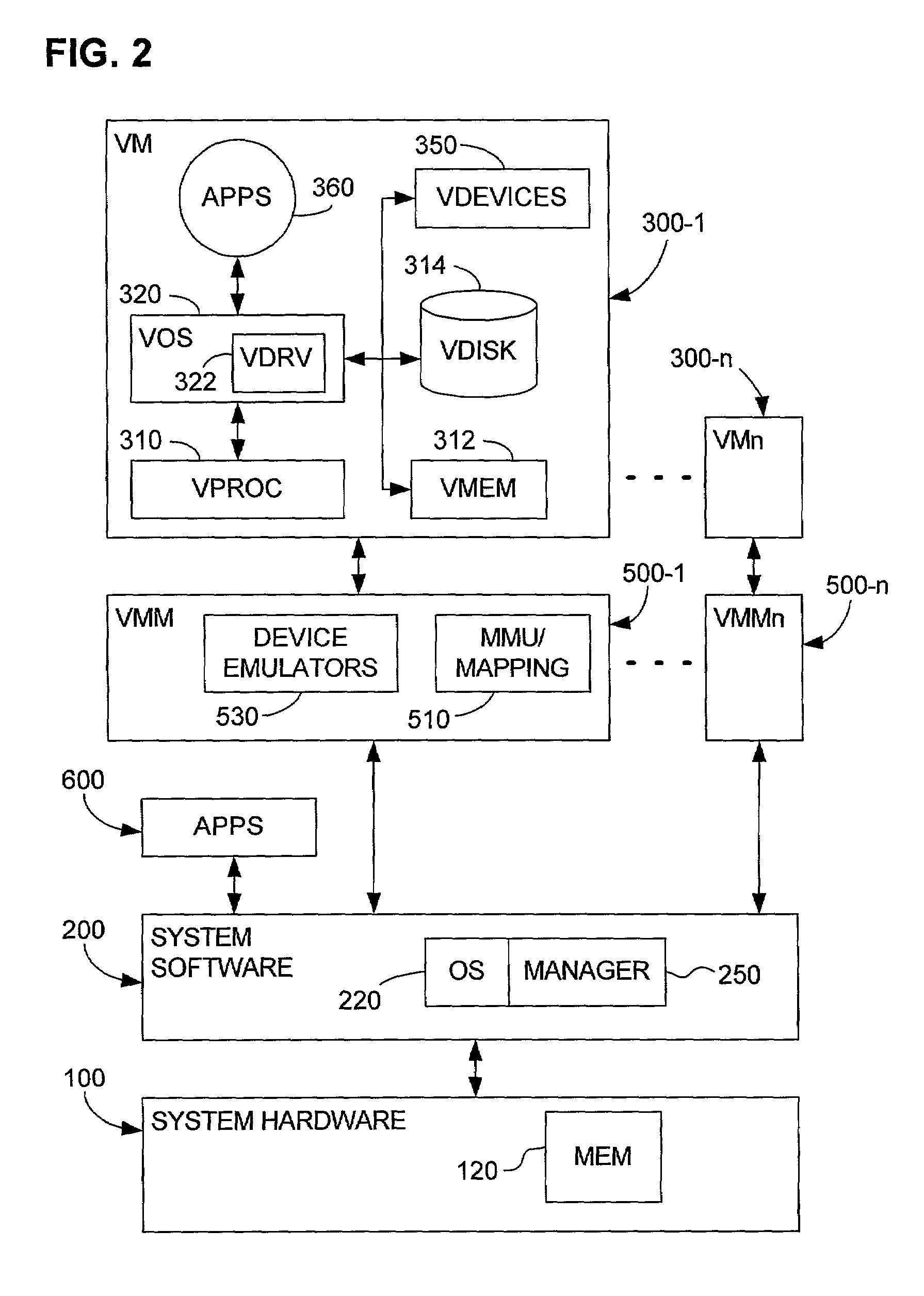Proportional share resource allocation with reduction of unproductive resource consumption
a resource allocation and proportional share technology, applied in the field of computer resource allocation mechanisms, can solve problems such as inability to ensure the most productive, lack of any way to express the relative importance of individual clients, and problems with the allocation of other resources, and achieve the effect of efficient allocation of many different kinds of resources
- Summary
- Abstract
- Description
- Claims
- Application Information
AI Technical Summary
Problems solved by technology
Method used
Image
Examples
Embodiment Construction
[0031]The invention provides a mechanism for allocation of a resource among different clients that may want to use it and whose requests for use of the resource may conflict. This broad statement includes at least three concepts whose specifics define different embodiments or aspects of the invention, namely, “resource,”“client” and “allocation.” These concepts will be made clearer below.
[0032]General System Configuration
[0033]As FIG. 1 shows, the main components of the system according to the invention include an underlying system hardware platform 100, system software 200, and a plurality of clients 300-1, . . . , 300-n that run on the system software 200. As in most computers, two different types of data storage are commonly provided: a system memory 120, typically implemented using any of the various RAM technologies, and a usually higher-capacity storage device 140 such as one or more memory disks. FIG. 1 also shows that conventional peripheral devices 400 may be connected to r...
PUM
 Login to View More
Login to View More Abstract
Description
Claims
Application Information
 Login to View More
Login to View More - R&D
- Intellectual Property
- Life Sciences
- Materials
- Tech Scout
- Unparalleled Data Quality
- Higher Quality Content
- 60% Fewer Hallucinations
Browse by: Latest US Patents, China's latest patents, Technical Efficacy Thesaurus, Application Domain, Technology Topic, Popular Technical Reports.
© 2025 PatSnap. All rights reserved.Legal|Privacy policy|Modern Slavery Act Transparency Statement|Sitemap|About US| Contact US: help@patsnap.com



